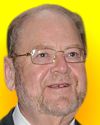
Born 3 Nov 1950.
James Edward Rothman is an American cell biologist who shared (with Randy W. Schekman and Thomas C. Südhof) the 2013 Nobel Prize in Physiology or Medicine “for their discoveries of machinery regulating vesicle traffic, a major transport system in our cells.” Vesicles are tiny, sac-like structures that serve as transportation mechanisms within cells. While this fact was long known, the precise mechanism had remained unexplained as to how they fused with organelles or the plasma membrane to ferry the cargo of substances needed by the cell to various destinations within, as well as outside the cell. The problem could be imagined like looking at a fleet of vans transporting thousands of packages around hundreds of miles of city streets and needing to explain how they efficiently find the right destination where to stop and unload which parts of the cargo.«
James Edward Rothman is an American cell biologist who shared (with Randy W. Schekman and Thomas C. Südhof) the 2013 Nobel Prize in Physiology or Medicine “for their discoveries of machinery regulating vesicle traffic, a major transport system in our cells.” Vesicles are tiny, sac-like structures that serve as transportation mechanisms within cells. While this fact was long known, the precise mechanism had remained unexplained as to how they fused with organelles or the plasma membrane to ferry the cargo of substances needed by the cell to various destinations within, as well as outside the cell. The problem could be imagined like looking at a fleet of vans transporting thousands of packages around hundreds of miles of city streets and needing to explain how they efficiently find the right destination where to stop and unload which parts of the cargo.«
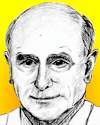
Self-portrait
Born 3 Nov 1897; died 5 Jun 1984 at age 86.
Frederick Stratten Russell was an English marine biologist who linked the depth distribution of planktonic organisms to the intensity of light in the seas off the British Isles. He used photoelectric cells to measure the light, finding that the plankton moved up and down the water column in a daily cycle. Seasonal variations in light intensity also affected the migrations. His work helped explain the long-term changes in the ecosystem of the English Channel. Russell was fascinated by the larval stages of fishes and the life histories of certain types of jellyfish, which he studied in great detail. He wrote and illustrated several books on his findings. He was knighted in 1965.
Frederick Stratten Russell was an English marine biologist who linked the depth distribution of planktonic organisms to the intensity of light in the seas off the British Isles. He used photoelectric cells to measure the light, finding that the plankton moved up and down the water column in a daily cycle. Seasonal variations in light intensity also affected the migrations. His work helped explain the long-term changes in the ecosystem of the English Channel. Russell was fascinated by the larval stages of fishes and the life histories of certain types of jellyfish, which he studied in great detail. He wrote and illustrated several books on his findings. He was knighted in 1965.
The Seas: Our Knowledge of Life in the Sea and How it is Gained, by Sir Frederick S. Russell, and C.M. Yonge. - book suggestion.
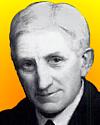
Born 3 Nov 1872; died 25 Nov 1939 at age 67. quotes
Wilfred Batten Lewis Trotter was an English surgeon, who was an authority on cancers of the neck and head and recognized as a pioneer in neurosurgery. He took an interest in sociology and originated the term "herd instinct" in his book Instincts of the Herd in Peace and War (1914), referring to human behaviour. He was the first to study the psychology of animals, investigating gregariousness as an instinct, in a beehive, a flock of sheep and a wolf pack. He related how herd membership created a homogeneity whereby individuals would instead act together as one. Within humanity, he distinguished two disparate types of people: resistive and sensitive, which came into conflict as the former resisted change, while the latter embraced change.«
Wilfred Batten Lewis Trotter was an English surgeon, who was an authority on cancers of the neck and head and recognized as a pioneer in neurosurgery. He took an interest in sociology and originated the term "herd instinct" in his book Instincts of the Herd in Peace and War (1914), referring to human behaviour. He was the first to study the psychology of animals, investigating gregariousness as an instinct, in a beehive, a flock of sheep and a wolf pack. He related how herd membership created a homogeneity whereby individuals would instead act together as one. Within humanity, he distinguished two disparate types of people: resistive and sensitive, which came into conflict as the former resisted change, while the latter embraced change.«
Instincts of the Herd in Peace And War, by Wilfred Trotter. - book suggestion.
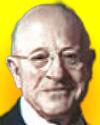
Born 3 Nov 1870; died 7 Jan 1965 at age 94.
American chemist who was involved with commercial production of calcium carbide (discovered accidentally with his father on 2 May 1892). Calcium carbide is used to generate acetylene gas, important for welding, and is the basis for the syntheses of many organic chemicals and polymers. In 1897, he became a construction engineer for building calcium carbide manufacturing plants in the U.S. and abroad. He cofounded (1900), and was a major stockholder of, the Union Carbide Corporation. During 1899, he designed a gas analysis apparatus which became standard equipment in industrial laboratories. He published Analysis of Industrial Gases.(1900). He donated the Morehead Planetarium, the first at a U.S. university, which opened 10 May 1949 at the University of Chapel Hill, North Carolina.«.
American chemist who was involved with commercial production of calcium carbide (discovered accidentally with his father on 2 May 1892). Calcium carbide is used to generate acetylene gas, important for welding, and is the basis for the syntheses of many organic chemicals and polymers. In 1897, he became a construction engineer for building calcium carbide manufacturing plants in the U.S. and abroad. He cofounded (1900), and was a major stockholder of, the Union Carbide Corporation. During 1899, he designed a gas analysis apparatus which became standard equipment in industrial laboratories. He published Analysis of Industrial Gases.(1900). He donated the Morehead Planetarium, the first at a U.S. university, which opened 10 May 1949 at the University of Chapel Hill, North Carolina.«.
History of Industrial Gases, by Ebbe Almqvist. - book suggestion.
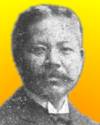
Born 3 Nov 1854; died 22 Jul 1922 at age 67.
Japanese-American biochemist and industrialist who isolated the hormone produced in the adrenal gland that causes the body to respond to emergencies. This chemical was adrenalin (now called epinephrine) from the suprarenal gland (1901). This was the first pure hormone to be isolated from natural sources. He applied for and received a U.S. patent on the substance, and went on to make a fortune with his marketing of Adrenalin. In fact, the product that he marketed was not pure epinephrine, but a mixture of the hormone and its sibling compound, norepinephrine (or noradrenaline). It is now made synthetically. He also found takadastase, and played a key role in the introduction of phosphate fertilizer along with various other manufacturing and chemical industries. to Japan.
Japanese-American biochemist and industrialist who isolated the hormone produced in the adrenal gland that causes the body to respond to emergencies. This chemical was adrenalin (now called epinephrine) from the suprarenal gland (1901). This was the first pure hormone to be isolated from natural sources. He applied for and received a U.S. patent on the substance, and went on to make a fortune with his marketing of Adrenalin. In fact, the product that he marketed was not pure epinephrine, but a mixture of the hormone and its sibling compound, norepinephrine (or noradrenaline). It is now made synthetically. He also found takadastase, and played a key role in the introduction of phosphate fertilizer along with various other manufacturing and chemical industries. to Japan.
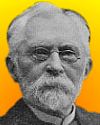
Born 3 Nov 1841; died 2 Apr 1924 at age 82. quotes
Danish botanist whose is regarded as a founder of plant ecology for demonstrating how interactions between plants, animals and other organisms in a habitat form a community shaped by environmental conditions, such as a meadow ecosystem. Although the term ecology was previously coined by Haeckel in 1866, Warming provided a theoretical basis for research in this new discipline within botany. Warming studied what he called environmental factors, including soil, light, temperature and rainfall. His expedition to Brazil (1863-66) yielded a thorough study of the tropical flora. His other travels included Greenland (1884), Norway (1885), the West Indies and Venezuela (1890-92) to study the full range from artic to temperate to tropical habitats.«
Danish botanist whose is regarded as a founder of plant ecology for demonstrating how interactions between plants, animals and other organisms in a habitat form a community shaped by environmental conditions, such as a meadow ecosystem. Although the term ecology was previously coined by Haeckel in 1866, Warming provided a theoretical basis for research in this new discipline within botany. Warming studied what he called environmental factors, including soil, light, temperature and rainfall. His expedition to Brazil (1863-66) yielded a thorough study of the tropical flora. His other travels included Greenland (1884), Norway (1885), the West Indies and Venezuela (1890-92) to study the full range from artic to temperate to tropical habitats.«
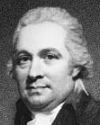
Born 3 Nov 1749; died 15 Nov 1819 at age 70.
Scottish chemist and photographer who discovered the portion of air that does not support combustion, now known to be nitrogen. After letting a mouse live in a confined quantity of air until it died, he burned a candle and burned phosphorus in the same air as long as they would burn. He assumed the remaining gas was carbon dioxide, which he dissolved by passing it through a strong alkali. Yet there remained gas that was incapable of supporting respiration or combustion which he knew no longer contained oxygen or carbon dioxide. He called it “phlogisticated air,” following the phlogiston theory of Georg Stahl. It was later properly described by Antoine Lavoisier. Rutherford also designed the first maximum-minimum thermometer.*
Scottish chemist and photographer who discovered the portion of air that does not support combustion, now known to be nitrogen. After letting a mouse live in a confined quantity of air until it died, he burned a candle and burned phosphorus in the same air as long as they would burn. He assumed the remaining gas was carbon dioxide, which he dissolved by passing it through a strong alkali. Yet there remained gas that was incapable of supporting respiration or combustion which he knew no longer contained oxygen or carbon dioxide. He called it “phlogisticated air,” following the phlogiston theory of Georg Stahl. It was later properly described by Antoine Lavoisier. Rutherford also designed the first maximum-minimum thermometer.*
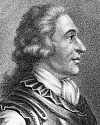
Born 3 Nov 1718; died 30 Apr 1792 at age 73.
(4th Earl of Sandwich) British politician, inventor and explorer, for whom the sandwich is named, which is said he invented in 1762. A story was offered in Grosley's Tour to London that Sandwich often spent excessive time gambling and he didn't want to get up from the gambling table, so he told his servants to bring him meat between two slices of bread. Although this story is often quoted, it seems without support. Rodger, Sandwich's biographer, describes the original form using salt beef, as more likely to have been invented to eat while working at his desk, where he spent long hours. Captain Cook named the Sandwich Islands (Hawaii) for him. As first lord of the admiralty (1771-82) during the American Revolution, he was held responsible for the navy's disastrous unpreparedness for war.«
(4th Earl of Sandwich) British politician, inventor and explorer, for whom the sandwich is named, which is said he invented in 1762. A story was offered in Grosley's Tour to London that Sandwich often spent excessive time gambling and he didn't want to get up from the gambling table, so he told his servants to bring him meat between two slices of bread. Although this story is often quoted, it seems without support. Rodger, Sandwich's biographer, describes the original form using salt beef, as more likely to have been invented to eat while working at his desk, where he spent long hours. Captain Cook named the Sandwich Islands (Hawaii) for him. As first lord of the admiralty (1771-82) during the American Revolution, he was held responsible for the navy's disastrous unpreparedness for war.«
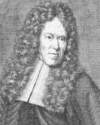
Born 3 Nov 1633; died 5 Nov 1714 at age 81. quotes
Italian physician, born in Capri, Italy, who first recorded relationships between occupational environment and workers' illnesses and is considered a founder of occupational medicine. Educated in philosophy and medicine, he developed his interest in workers' health while a student. He introduced the diagnostic tool of asking a patient his occupation, and classified occupational health hazards accord to causes (noxious vapors, very fine particles, heat, cold, humidity, irregular physical motions, etc). He addressed issues of ventilation and recommended such protections as face masks. He compiled the first systematic treatise on occupational diseases, De Morbis Artificum Diatriba (1700). He taught at the University of Padua until his death in 1714.
Italian physician, born in Capri, Italy, who first recorded relationships between occupational environment and workers' illnesses and is considered a founder of occupational medicine. Educated in philosophy and medicine, he developed his interest in workers' health while a student. He introduced the diagnostic tool of asking a patient his occupation, and classified occupational health hazards accord to causes (noxious vapors, very fine particles, heat, cold, humidity, irregular physical motions, etc). He addressed issues of ventilation and recommended such protections as face masks. He compiled the first systematic treatise on occupational diseases, De Morbis Artificum Diatriba (1700). He taught at the University of Padua until his death in 1714.
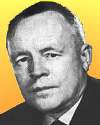
Died 3 Nov 1994 at age 97 (born 9 Aug 1897). quotes
Ralph (Walter Graystone) Wyckoff was an American scientist, a pioneer in the application of X-ray methods to determine crystal structures and one of the first to use these methods for studying biological substances. He became famous in two areas of structural research: X-ray diffraction and electron microscopy. He developed a new technique of 'metal shadowing' for observation with the electron microscope. A specimen, such as a virus, is placed in a vacuum together with a heated tungsten filament covered with gold. Vaporized gold coated the side of the specimen nearest the filament, leaving a 'shadow' on the far side. This allowed better estimates to be made of their size and shape, as well as revealing details of their structure.
Ralph (Walter Graystone) Wyckoff was an American scientist, a pioneer in the application of X-ray methods to determine crystal structures and one of the first to use these methods for studying biological substances. He became famous in two areas of structural research: X-ray diffraction and electron microscopy. He developed a new technique of 'metal shadowing' for observation with the electron microscope. A specimen, such as a virus, is placed in a vacuum together with a heated tungsten filament covered with gold. Vaporized gold coated the side of the specimen nearest the filament, leaving a 'shadow' on the far side. This allowed better estimates to be made of their size and shape, as well as revealing details of their structure.
Died 3 Nov 1986 at age 74 (born 14 Jun 1912).
Edward Cuyler Hammond was an American epidemiologist who was the first to link smoking with lung cancer. In 1957, while research director of the American Cancer Society, Hammond told congressional investigators that cigarette smoking is a cause of lung cancer and has a severe effect on a number of other diseases. "Evidence that smoking is a serious health hazard has been accumulating slowly since about 1915," he said, and that recent studies have produced "overwhelming" evidence that cigarette smoking "is a causative factor of great importance in the occurrence of lung cancer." He continued that there has been an "alarming trend in the death rates from lung cancer," with the number of deaths rising from 2,500 in 1930 to an estimated 29,000 in 1956.
Edward Cuyler Hammond was an American epidemiologist who was the first to link smoking with lung cancer. In 1957, while research director of the American Cancer Society, Hammond told congressional investigators that cigarette smoking is a cause of lung cancer and has a severe effect on a number of other diseases. "Evidence that smoking is a serious health hazard has been accumulating slowly since about 1915," he said, and that recent studies have produced "overwhelming" evidence that cigarette smoking "is a causative factor of great importance in the occurrence of lung cancer." He continued that there has been an "alarming trend in the death rates from lung cancer," with the number of deaths rising from 2,500 in 1930 to an estimated 29,000 in 1956.
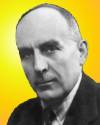
Died 3 Nov 1960 at age 70 (born 29 Mar 1890). quotes
English astronomer who was 10th astronomer royal of England (1933–55). His work was devoted to fundamental positional astronomy. While HM Astronomer at the Cape of Good Hope, he worked on proper motions and parallaxes. Later he showed that small residuals in the apparent motions of the planets are due to the irregular rotation of the earth. He led in the worldwide effort to determine the distance to the sun by triangulating the distance of the asteroid Eros when it passed near the earth in 1930-31. Spencer Jones also improved timekeeping and knowledge of the Earth's rotation. After WW II he supervised the move of the Royal Observatory to Herstmonceux, where it was renamed the Royal Greenwich Observatory.
English astronomer who was 10th astronomer royal of England (1933–55). His work was devoted to fundamental positional astronomy. While HM Astronomer at the Cape of Good Hope, he worked on proper motions and parallaxes. Later he showed that small residuals in the apparent motions of the planets are due to the irregular rotation of the earth. He led in the worldwide effort to determine the distance to the sun by triangulating the distance of the asteroid Eros when it passed near the earth in 1930-31. Spencer Jones also improved timekeeping and knowledge of the Earth's rotation. After WW II he supervised the move of the Royal Observatory to Herstmonceux, where it was renamed the Royal Greenwich Observatory.
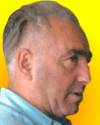
Died 3 Nov 1957 at age 60 (born 24 Mar 1897). quotes
Austrian psychologist who developed a system of psychoanalysis concentrating on overall character structure, rather than on individual neurotic symptoms. His early work on psychoanalytic technique was overshadowed by his involvement in the sexual-politics movement and by “orgonomy,” a pseudoscientific system he developed. He also built a device he called a cloud buster, with which he claimed he could manipulate the weather by manipulating the “orgone” in the atmosphere. Reich’s claims aroused much controversy. He was taken to court for fraud by the Food and Drug Administration (FDA). The court ordered his books and research burned and his equipment destroyed. Reich was sentenced to prison where he died of heart failure.«
Austrian psychologist who developed a system of psychoanalysis concentrating on overall character structure, rather than on individual neurotic symptoms. His early work on psychoanalytic technique was overshadowed by his involvement in the sexual-politics movement and by “orgonomy,” a pseudoscientific system he developed. He also built a device he called a cloud buster, with which he claimed he could manipulate the weather by manipulating the “orgone” in the atmosphere. Reich’s claims aroused much controversy. He was taken to court for fraud by the Food and Drug Administration (FDA). The court ordered his books and research burned and his equipment destroyed. Reich was sentenced to prison where he died of heart failure.«
Fury On Earth: A Biography Of Wilhelm Reich, by Myron Sharaf. - book suggestion.
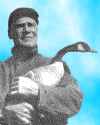
Died 3 Nov 1944 at age 79 (born 10 Apr 1865).
Canadian naturalist, author, and lecturer who won a reputation as a leading bird conservationist and who conducted extensive research into migratory patterns. In 1904, he founded the Jack Miner Bird Sanctuary for the conservation of migrating Canada geese and wild ducks, originating the waterfowl refuge management system. In 1909, he pioneered the tagging of migratory waterfowl by banding his first wild duck. The band was returned by Dr. W. Bray of Anderson, South Carolina in Jan 1910, thus making the first complete banding record. The same year Miner started a 30 year lecture career speaking on wildlife conservation and the need for the establishment of sanctuaries and wildlife refuges.
Canadian naturalist, author, and lecturer who won a reputation as a leading bird conservationist and who conducted extensive research into migratory patterns. In 1904, he founded the Jack Miner Bird Sanctuary for the conservation of migrating Canada geese and wild ducks, originating the waterfowl refuge management system. In 1909, he pioneered the tagging of migratory waterfowl by banding his first wild duck. The band was returned by Dr. W. Bray of Anderson, South Carolina in Jan 1910, thus making the first complete banding record. The same year Miner started a 30 year lecture career speaking on wildlife conservation and the need for the establishment of sanctuaries and wildlife refuges.
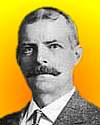
Died 3 Nov 1939 at age 79 (born 14 Feb 1860).
Swedish-born American economic geologist who was a leader in the science of ore deposition and the use of the petrographic microscope. He helped establish that veins of metal and similar deposits are created by hot solutions derived from molten rock below, not by water seepage from above. His interest in geology began as a youth from reading a book on mineralogy and a visit at the age of 10 to the west coast of Sweden where rocks are beautifully exposed. By the time he was 17 he had seen the mines of central Sweden and the famous old silver workings of Kongsberg in Norway. As a young mining geologist, he emigrated to America in Jun 1883, drawn by the rapidly growing mining industry of the Western United States.
Swedish-born American economic geologist who was a leader in the science of ore deposition and the use of the petrographic microscope. He helped establish that veins of metal and similar deposits are created by hot solutions derived from molten rock below, not by water seepage from above. His interest in geology began as a youth from reading a book on mineralogy and a visit at the age of 10 to the west coast of Sweden where rocks are beautifully exposed. By the time he was 17 he had seen the mines of central Sweden and the famous old silver workings of Kongsberg in Norway. As a young mining geologist, he emigrated to America in Jun 1883, drawn by the rapidly growing mining industry of the Western United States.
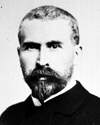
Died 3 Nov 1933 at age 79 (born 17 Dec 1853). quotes
Pierre-Paul-Émile Roux was a French bacteriologist who began working with Louis Pasteur in 1878. He was noted for his work on diphtheria. In 1888, Roux and Alexandre Yersin isolated a soluble toxin from cultures of diphtheria. The bacterium itself, though only found in the throat, has destructive tissue and organ effects body wide, by producing, they hypothesized, the chemical toxin. They filtered diphtheria cultures to remove the bacteria and then used the remaining fluid filtrate into healthy animals. As expected the animals showed diphtheria lesions but without any obvious presence of bacteria thus demonstrating that a toxin is the active agent causing diphtheria. He became director of Pasteur Institute at Paris in 1904.
Pierre-Paul-Émile Roux was a French bacteriologist who began working with Louis Pasteur in 1878. He was noted for his work on diphtheria. In 1888, Roux and Alexandre Yersin isolated a soluble toxin from cultures of diphtheria. The bacterium itself, though only found in the throat, has destructive tissue and organ effects body wide, by producing, they hypothesized, the chemical toxin. They filtered diphtheria cultures to remove the bacteria and then used the remaining fluid filtrate into healthy animals. As expected the animals showed diphtheria lesions but without any obvious presence of bacteria thus demonstrating that a toxin is the active agent causing diphtheria. He became director of Pasteur Institute at Paris in 1904.
Died 3 Nov 1923 at age 57 (born 5 Aug 1866). quotes
German chemist and industrialist who was one of the leading scientists in the elastomer field at the turn of the 20th century. He developed the ozonolysis process (Harries reaction) to determine the structure of natural rubber (polyisoprene). Breaking down the natural rubber substance by the action of ozone, Harries determined its molecular structure is made up from long chains containing many hundreds of isoprene molecules bonded together. That insight was followed up by Fritz Hofmann, who accomplished polymerization of pure isoprene to form synthetic rubber (Aug 1909). On 12 Sep 1909, his process was the granted the world's first patent (German No. 250690) on a “Method for producing synthetic rubber.”
German chemist and industrialist who was one of the leading scientists in the elastomer field at the turn of the 20th century. He developed the ozonolysis process (Harries reaction) to determine the structure of natural rubber (polyisoprene). Breaking down the natural rubber substance by the action of ozone, Harries determined its molecular structure is made up from long chains containing many hundreds of isoprene molecules bonded together. That insight was followed up by Fritz Hofmann, who accomplished polymerization of pure isoprene to form synthetic rubber (Aug 1909). On 12 Sep 1909, his process was the granted the world's first patent (German No. 250690) on a “Method for producing synthetic rubber.”
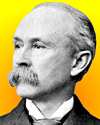
Died 3 Nov 1915 at age 77 (born 18 Jun 1838). quotes
American physician and bacteriologist who was a Surgeon General. He was first accepted into the U.S. Army on 31 May 1861 as an assistant surgeon. As he advanced in his career, he developed an interest in bacteriology and the associated consideration of disinfection. Steinberg was the first in the U.S. to demonstrate the plasmodium of malaria (1885) and the bacilli of tuberculosis and typhoid fever (1886). He was directed by the president to make investigations in Brazil, Mexico, and Cuba (1887-89) relating to the etiology and prevention of yellow fever. By 30 May 1893 he was appointed brigadier-general and surgeon-general. He retired in 1902, and worked to improve general sanitation in Washington, DC.«
American physician and bacteriologist who was a Surgeon General. He was first accepted into the U.S. Army on 31 May 1861 as an assistant surgeon. As he advanced in his career, he developed an interest in bacteriology and the associated consideration of disinfection. Steinberg was the first in the U.S. to demonstrate the plasmodium of malaria (1885) and the bacilli of tuberculosis and typhoid fever (1886). He was directed by the president to make investigations in Brazil, Mexico, and Cuba (1887-89) relating to the etiology and prevention of yellow fever. By 30 May 1893 he was appointed brigadier-general and surgeon-general. He retired in 1902, and worked to improve general sanitation in Washington, DC.«
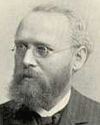
Died 3 Nov 1896 at age 49 (born 12 Dec 1846).
German chemist who discovered that the thyroid gland was rich in iodine, an element not known before that to occur naturally in animal tissue, making the thyroid gland unique in being the only tissue to contain iodine. This led to the discovery of the iodine-containing thyroid hormone and to its treatment in thyroid disorders. This, his most important discovery, he made in the last year of his life, 1896.
German chemist who discovered that the thyroid gland was rich in iodine, an element not known before that to occur naturally in animal tissue, making the thyroid gland unique in being the only tissue to contain iodine. This led to the discovery of the iodine-containing thyroid hormone and to its treatment in thyroid disorders. This, his most important discovery, he made in the last year of his life, 1896.
Died 3 Nov 1832 at age 66 (born 10 Apr 1766). quotes
Scottish physicist and mathematician who first created artificial ice. His practical scientific investigations led to his book Experimental Inquiry Into the Nature and Propagation of Heat (1804), dealing with the fundamental laws of heat radiation. Leslie gave the first correct description of capillary action (1802) and invented many instruments, most notably an accurate differential air thermometer, and also a hygrometer, a photometer, the pyroscope, atmometer and aethrioscope. In 1810, he devised a method of obtaining very low temperatures, by evaporating water in a receiver evacuated with an air-pump but containing a drying agent. His mathematical works include texts on geometry, trigonometry and The Philosophy of Arithmetic.
Scottish physicist and mathematician who first created artificial ice. His practical scientific investigations led to his book Experimental Inquiry Into the Nature and Propagation of Heat (1804), dealing with the fundamental laws of heat radiation. Leslie gave the first correct description of capillary action (1802) and invented many instruments, most notably an accurate differential air thermometer, and also a hygrometer, a photometer, the pyroscope, atmometer and aethrioscope. In 1810, he devised a method of obtaining very low temperatures, by evaporating water in a receiver evacuated with an air-pump but containing a drying agent. His mathematical works include texts on geometry, trigonometry and The Philosophy of Arithmetic.
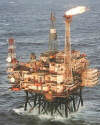
In 1975, Queen Elizabeth II opened the North Sea pipeline, Firth of Forth. The first oil was piped ashore from the North Sea at Peterhead, Scotland. From BP's "Forties Field" the pipe runs 110 miles along the seabed and then 130 miles to the oil refinery at Grangemouth. The field was discovered by the drilling rig Sea Quest in October 1970. Now, oil from the Forties reservoir is produced through some 55 producing wells which deviate by up to 65° from the vertical and fan out to 3 kilometres from each of several platforms.
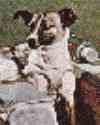
In 1957, Sputnik 2 was launched, with the first live animal sent into space - a Siberian husky dog, Laika (“barker” in Russian). By design, the craft was not planned for recovery, and Laika died in orbit. Biological data, the first data of its kind, was transmitted back to Earth while she lived. The data showed scientists how Laika was adapting to space - information important to the imminent planned manned missions. The 508-kg satellite remained in orbit 162 days. Laika was considered a hero in the Soviet Union. The first human to pilot a spacecraft, Yuri Gagarin, followed on 12 Apr 1961, aboard Vostok 1.«
more
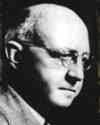
In 1952, Clarence Birdseye marketed the first frozen peas in Chester, N.Y. While a U.S. field naturalist near the Arctic, he had learned the technique of flash freezing from Labrador Inuit. Freshly caught fish, when placed onto the Arctic ice in the frigid wind, froze solid almost immediately. In Sep 1922, he began a company, Birdseye Seafoods, Inc., to process chilled fish fillets at a plant near the Fulton Fish Market in New York City. On 3 Jul 1924, he organized the General Seafood Corporation, which began the frozen foods industry. Retail frozen foods began 6 Mar 1930, in Springfield, Massachusetts at the "Springfield Experiment Test Market" which offered 26 different vegetables, fruits, fish, and meats.
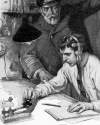
In 1906, “SOS” was specified as the international distress signal, in a document signed by representatives of 27 nations at the second International Wireless Telegraph Convention in Berlin. It would replace the earlier Marconi call sign CQD. By 1904 many transatlantic British ships had wireless equipment. First used in England on landline wires, “CQ” preceded time signals and special notices as a sign for “all stations.” The Marconi company suggested adding the “D” meaning distress. The code “CQD” was established as a distress signal on 1 Feb 1904, but was never chosen from such a phrase as “Come Quick Danger.” The 1906 Conference proceedings do not detail the discussions about the choice of SOS. The likely reason is that it was speedy to tap out (not from “Save Our Souls”).
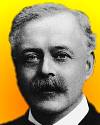
In 1894, the British Orthopaedic Society held its first general meeting at the Holborn Restaurant, London. Of the 31 members, 13 were local to London. Its formation was led by a group of seven surgeons including Sir Robert Jones who had met informally on 3 Aug 1894 and chose its name and chairman. It ceased to exist in 1900, perhaps because the members, being mostly general surgeons practicing only some orthopaedics, had too limited interest in the specialty. In 1918, Sir Robert Jones and several others surgeons again founded a professional organisation, the current British Orthopaedic Association. The American Orthopaedic Association was the first nationally affiliated group of orthopaedic surgeons (1887)*«[Image: Sir Robert Jones.] more
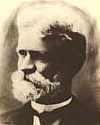
In 1892, the first automatic telephone exchange, using the switching device invented by Almon B. Strowger, (born 1839) opened to the public in LaPorte, Indiana, with about seventy-five subscribers. A considerable amount of ceremony was attached to the affair, with a special train run from Chicago and a brass band on hand to greet the guests. This early system did not use a dial to enter the desired number. Instead, using three keys, one for each digit of a three-digit number, a subscriber pressed each key the appropriate number of times for each digit. The first dial phones (with projecting vanes instead of holes) was used in Milwaukee's City Hall (1896).* In the UK, the very first Strowger exchange opened at Epsom in Surrey in 1912.

In 1863, the first U.S. yeast preparation patent was issued to J.T. Alden of Cincinnati, Ohio (No. 40,451), for "an improvement in the preparation of yeast" which reduced concentrated yeast from a plastic or semi-fluid state to a dry granular form, a convenient way of preservation for future use. His process was to press the live yeast concentrate through a fine wire mesh to produce threads of the substance of about 1/8-inch square. When laid on drying racks, moisture rapidly evaporated because of the high surface area, leaving the dried yeast in a finely-divided state. The granular form avoided the grinding and crushing needed with using cake form dried yeast, which mechanically damaged the yeast cells, reducing the active yield.
In 1863, the first U.S. patent for an antifouling paint for ships' hulls was issued to J.G. Tarr and A.H. Wonson (No. 40515) for a copper oxide, tar and naptha mixture. They claimed that a ship's hull thus painted could have protection against growth of barnacle shells and seaweeds lasting "for a period of twelve months, while another vessel painted in the common manner and employed in the same trade became so foul in six weeks as to require scraping." They took out an anti-corrosion antifouling paint patent on 13 Jun 1865 (U.S. No.48221). Fouling of a ship's bottom was a serious problem because it increases drag and greatly reduces a ship's speed. A British antifouling paint patent was issued on 31 Aug 1625 to William Beale.«






